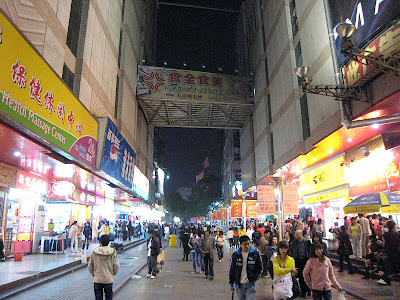by Tang Yuanzhou and Chen Xiaojing
It is necessary to understand the principles for the establishment of a successful and attractive pedestrian-friendly environment at the beginning of the project. According to Gehl (2004), by the introduction of good pedestrian environment, public space would supplement the private life spheres with a well-functioning public domain, inviting people to walk more and stay longer, offering a wide range of attractive public activities. Providing quality, lively open space where people feel happy to wander, linger and rest will encourage people to socialize more in public places. Hence a good pedestrian environment as a public space should be able to (1) create a better balance between vehicular traffic, pedestrians and cyclists; (2) improve conditions for walking and cycling; (3) improve conditions for resting and simply passing time; (4) upgrade the visual quality of the streetscape; (5) promote a shift in mind-sets towards a more people-orientated city culture.
According to the above principles, in the Shenzhen pedestrian project the city has been simplified and conceptualized as divided into several ‘pedestrian units’ with different kinds of urban functions. The concept of the plan is to provide a network to facilitate the pedestrian connection between and throughout these ‘units’. As illustrated in figure 1, grids with different colors represent the urban blocks with various uses, like residential, commercial, industrial, and so forth. Through the pedestrian network in between the urban blocks (as red and green lines in the figure), people are able to enjoy a generally city-wide walking and cycling experience. The pedestrian network is also the main object for planning. By improving the continuity and the physical condition of the network under planning and design control, it is expected to enhance the pedestrian environment in terms of accessibility, permeability, connectivity, and vitality.
Meanwhile, some international experience on the improvement of pedestrian environment and the promotion of pedestrian-friendly urban planning and development has been reviewed in this project. The study has referred to some well-known pedestrian-friendly cities like Copenhagen, Venice and Strasbourg.
According to the above principles, in the Shenzhen pedestrian project the city has been simplified and conceptualized as divided into several ‘pedestrian units’ with different kinds of urban functions. The concept of the plan is to provide a network to facilitate the pedestrian connection between and throughout these ‘units’. As illustrated in figure 1, grids with different colors represent the urban blocks with various uses, like residential, commercial, industrial, and so forth. Through the pedestrian network in between the urban blocks (as red and green lines in the figure), people are able to enjoy a generally city-wide walking and cycling experience. The pedestrian network is also the main object for planning. By improving the continuity and the physical condition of the network under planning and design control, it is expected to enhance the pedestrian environment in terms of accessibility, permeability, connectivity, and vitality.
Meanwhile, some international experience on the improvement of pedestrian environment and the promotion of pedestrian-friendly urban planning and development has been reviewed in this project. The study has referred to some well-known pedestrian-friendly cities like Copenhagen, Venice and Strasbourg.
 |
| colorful pavement, Shenzhen, china, photo by dcmaster |
 |
| Pedestrian street, Shenzhen, China, by conbon33 |
 |
| Pedestrian street, Shenzhen, China, by dcmaster |
 |
| Pedestrian street, Shenzhen, China, by dcmaster |
more about pedestrianization:
No comments:
Post a Comment